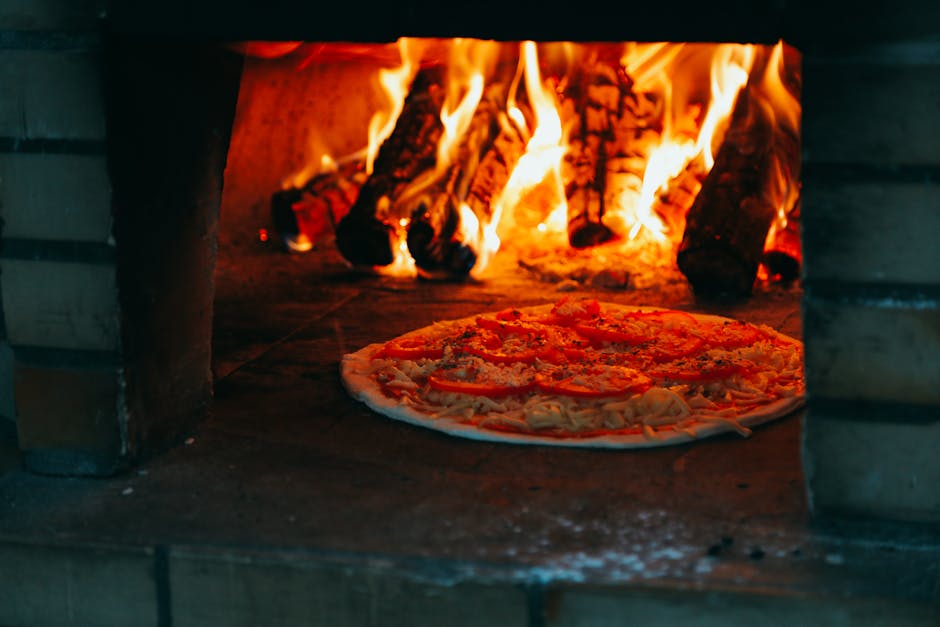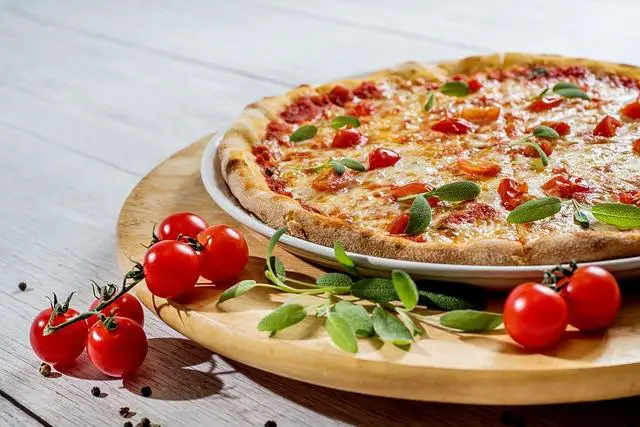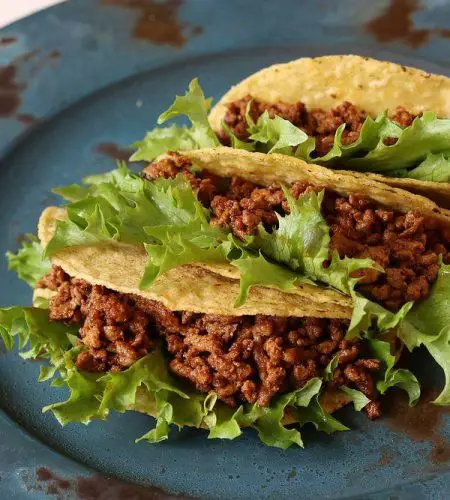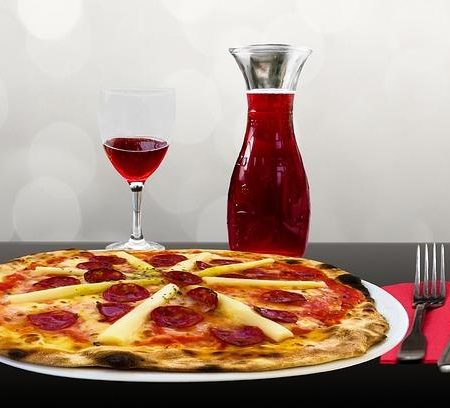In the land of pizza perfection, two titans clash in a battle for the ages: Stone vs. Pan. This ultimate showdown of culinary craftsmanship will determine once and for all which method reigns supreme in the quest for the perfect pie. So grab your apron and buckle up, because things are about to get cheesy!
Contents
Stone vs. Pan: The Age-Old Debate
Let’s settle this once and for all – which is superior, the stone or the pan? The age-old debate has been raging on for centuries, with passionate arguments on both sides. Here are some points to consider:
- Stone: It’s a natural material, which some believe imparts a unique flavor to food cooked on it.
- Pan: Provides even heat distribution and is easier to clean.
- Stone: Can be used on a grill, in the oven, or on the stovetop.
- Pan: Comes in a variety of materials, such as stainless steel, cast iron, and non-stick.
Those in the stone camp argue that nothing beats the crispiness achieved on a stone surface, while pan enthusiasts tout the versatility and convenience of their cooking vessel. At the end of the day, it all comes down to personal preference and the specific dish you’re preparing. So, whether you’re #TeamStone or #TeamPan, just remember that the most important thing is enjoying the food you cook!
 Pizza Stone”>
Pizza Stone”>
Understanding the Benefits of Using a Pizza Stone
If you’re tired of your pizza turning out soggy in the middle or with a burnt crust, it might be time to invest in a pizza stone. These magical slabs of stone may seem like a simple kitchen tool, but they have the power to transform your homemade pizza game forever.
One of the biggest benefits of using a pizza stone is its ability to evenly distribute heat. Unlike flimsy pizza pans or baking sheets, a pizza stone absorbs and retains heat, resulting in a perfectly crispy crust every time. No more dealing with undercooked dough or burnt edges – just deliciously uniform pizzas that will impress even the pickiest pizza snobs.
Another advantage of using a pizza stone is its versatility. Not only can you use it to bake pizzas, but you can also use it to bake bread, pastries, and even cookies. Imagine the possibilities of baking a fresh baguette or a batch of gooey chocolate chip cookies on a pizza stone – your taste buds will thank you.
So, if you’re looking to take your pizza-making skills to the next level and impress your friends and family with delicious homemade creations, consider investing in a pizza stone. Say goodbye to sad, floppy pizzas and hello to perfectly crispy, mouth-watering pies. Your taste buds will thank you!
 Baking Pizza in a Pan”>
Baking Pizza in a Pan”>
Advantages of Baking Pizza in a Pan
So you may have thought that the only way to enjoy a delicious homemade pizza is by baking it in the oven, but let me tell you about the wonders of baking pizza in a pan!
One of the biggest is that it creates a perfectly crisp crust every time. The pan helps to evenly distribute the heat, ensuring that the crust cooks up golden and crunchy, just the way pizza crust should be.
Another great thing about baking pizza in a pan is that it allows you to customize your pizza toppings in a whole new way. You can create individual pizzas for each family member, or even make a variety of mini pizzas with different topping combinations. The possibilities are endless!
And let’s not forget about the easy clean-up that comes with baking pizza in a pan. No more messy oven racks or pizza stones to scrub clean – just a simple pan that can be easily washed and put away.

Comparing Cooking Times and Crust Texture
So you’ve decided to bake a pie, but now comes the age-old question: how long should you bake it for and what kind of crust texture do you want? Let’s dive into the delicious world of s to help you make the perfect pie!
When it comes to cooking times, the options are endless. Do you want a pie that’s just barely set in the middle, or do you prefer a pie that’s cooked to perfection all the way through? It’s a tough decision, but one that can make or break your dessert masterpiece. You don’t want a soggy bottom, but you also don’t want a crust that’s as hard as an angry squirrel’s nut stash. Finding that perfect balance is key to a happy pie eating experience.
Now, let’s talk about crust texture. Are you team flaky crust or team crunchy crust? Some people like their crust to crumble at the mere touch of a fork, while others prefer a crust that requires a power tool to break through. It all comes down to personal preference, but no matter what side you’re on, a good crust can make or break a pie. Plus, who doesn’t love the satisfaction of that first bite into a perfectly baked crust?
So, what’s the verdict? How long will you bake your pie for and what kind of crust texture will you go for? Whichever you choose, just remember: A pie is only as good as its cooking time and crust texture. Happy baking!

The Importance of Heat Distribution in Pizza Making
When it comes to making the perfect pizza, one of the key factors that often gets overlooked is heat distribution. Sure, you might have the freshest ingredients and the most delicious sauce, but if your pizza doesn’t cook evenly, you’re in for a disappointing pie.
Picture this: you spend hours kneading the dough, carefully choosing your toppings, and preheating your oven to the perfect temperature. You slide your pizza in, all excited for the cheesy goodness that’s about to come. But then, disaster strikes - one side is burnt to a crisp while the other side is practically raw. All because of poor heat distribution.
So, how can you ensure that your pizza cooks evenly? Investing in a high-quality pizza stone or pizza steel is a game-changer. These tools help distribute heat more evenly across the pizza, ensuring a crispy crust and perfectly melted cheese every time. Trust me, once you start using one, you’ll never go back to baking on a plain old baking sheet.
Don’t let poor heat distribution ruin your pizza-making dreams. Embrace the power of even cooking and take your pies to the next level. Your taste buds (and your dinner guests) will thank you!
Which Method Yields a Crispier Crust: Stone or Pan?
When it comes to achieving the perfect crispy crust on your pizza, the battle between stone and pan is a hotly debated topic in the culinary world. Let’s break it down and see which method comes out on top!
Stone:
- Pro: Stone absorbs moisture from the dough, resulting in a drier crust that crisps up beautifully in the oven.
- Con: Stone can be tricky to use for beginners, as it requires preheating and proper maintenance to prevent sticking.
Pan:
- Pro: Pan provides a more controlled environment for baking, allowing for a consistent heat distribution that yields a reliably crispy crust.
- Con: Pan crusts tend to be softer and less crispy than stone-baked crusts, making them better suited for those who prefer a chewier texture.
So, which method reigns supreme in the quest for the crispiest crust? The answer ultimately depends on your personal preference and level of expertise in the kitchen. Whether you choose the ancient art of stone baking or the reliable convenience of a trusty pan, one thing is for sure – a crispy crust is always worth the effort!
Making the Decision: Stone or Pan for your Perfect Pizza
So you’ve decided to take matters into your own hands and make your very own perfect pizza at home. But there’s one crucial decision that stands in your way: should you use a stone or a pan to bake your pizza?
Let’s break it down, shall we?
First up, we have the trusty pizza stone. This bad boy has been around for centuries, absorbing moisture to give you that crispy, chewy crust we all know and love. Plus, it helps distribute heat evenly for that perfect bake every time. It’s like having a little pizza-making wizard in your oven!
But hold the phone, because the pizza pan is here to stir things up. With its deep dish design, the pan is perfect for those who prefer a thicker, more indulgent crust. Plus, it’s a breeze to clean up – just pop it in the dishwasher and you’re good to go! Talk about a pizza party in your mouth.
FAQs
Why is stone better than a pan for making pizza?
Well, let’s just say that stone provides the perfect combo of heat retention and air circulation for a crispy crust that can’t be beat. Plus, it gives that authentic wood-fired oven taste without the hassle of building an actual wood-fired oven in your backyard.
But can’t I just use a regular baking pan?
Sure, you can use a regular baking pan if you want a sad, soggy excuse for a pizza crust. But if you’re looking for that perfect balance of crispiness and chewiness, then a stone is the way to go.
Do I need any special equipment to use a stone for pizza?
Just a good quality pizza stone and a hot oven are all you need to transform your homemade pizza game. Oh, and maybe a pizza peel to slide your pizza in and out of the oven like a pro.
What about cleaning and maintenance for a pizza stone?
Keep it simple – just let your stone cool down completely before gently scraping off any stuck-on bits with a spatula. Avoid soap, as it can absorb into the stone and affect the flavor of your future pizzas. And don’t even think about tossing it in the dishwasher - that’s a one-way ticket to pizza stone purgatory.
Can I use a stone for anything other than pizza?
Absolutely! Your pizza stone can pull double duty as a baking surface for bread, cookies, and even roasted veggies. Just be sure to give it a good pre-heating before using it for anything other than pizza, to avoid any unexpected surprises.
So, who comes out on top in the showdown of stone vs. pan for perfect pizza?
While pans have their time and place, when it comes to achieving that elusive perfect pizza crust, the stone reigns supreme. Say goodbye to soggy bottoms and lackluster crusts, and say hello to pizza perfection with a trusty pizza stone by your side.
—
The Final Slice
And so dear pizza lovers, the battle between Stone and Pan for the title of Perfect Pizza has come to an end. Both contenders brought their A-game, with Stone delivering a crispy crust and Pan bringing the gooey deliciousness.
But in the end, only one can reign supreme. Whether you’re Team Stone or Team Pan, the most important thing is that you have a hot, cheesy slice of pizza in front of you.
So, go forth and choose your weapon of choice. And remember, no matter how you like your pizza, the ultimate showdown will always end in a full and satisfied stomach. Let the pizza wars continue!




